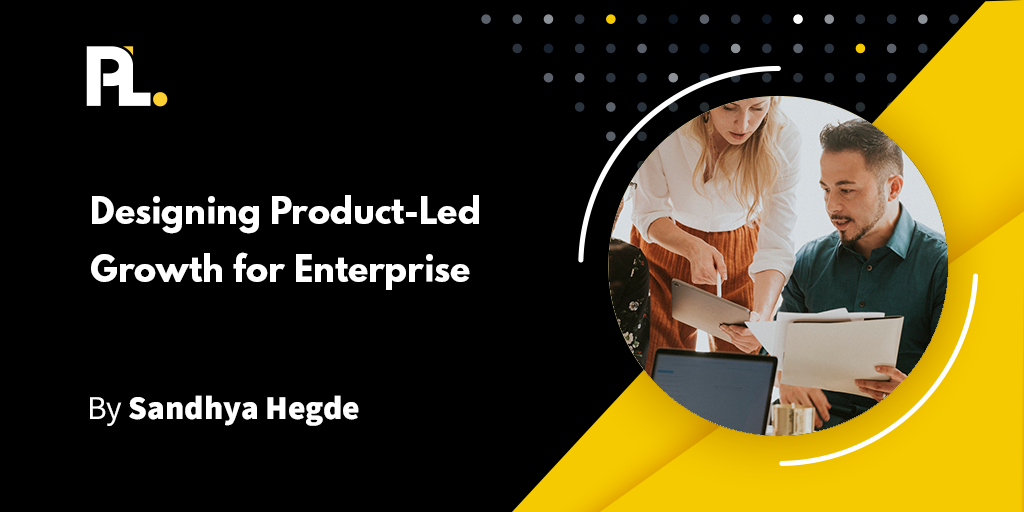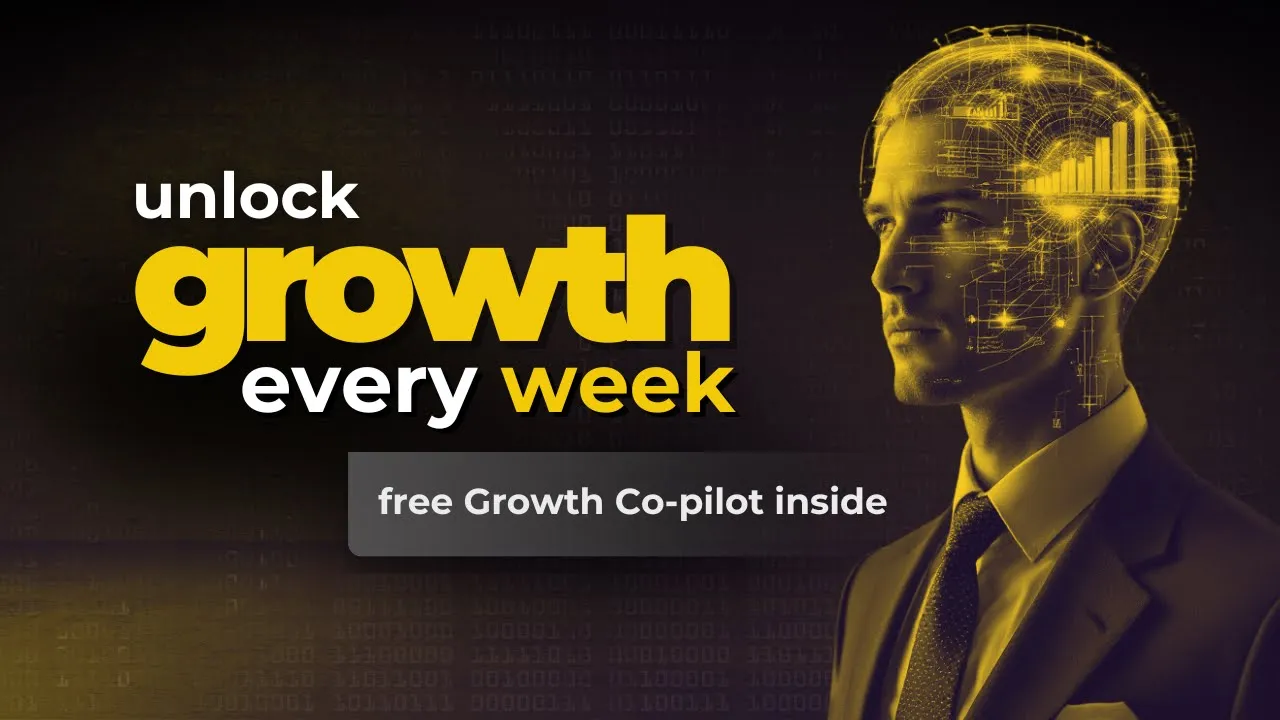
A product-led organization uses its product as the principal vehicle to acquire, activate, and retain users.
You know the benefits of product-led growth (PLG). But what steps can you take that will transition you from a sales-led business to a successful product-led organization?
Unfortunately, there’s no definitive guide.
In this article, I'll share the internal organizational structure of a product-led approach, what to keep in mind when it comes to freemium, and the most critical metrics for product-led organizations to track.
Product-Led Organization 101: The Basics
Product-led organizations use their product as the principal vehicle to acquire, activate, and retain users. The mission is to solve a user’s pain by creating the best product possible. Instead of making decisions based on what the company perceives to matter, consumer behavior data, and feedback are a direct reflection of the product’s value and where there are shortcomings.
Building a successful product-led growth strategy takes three steps that build on the other:
- First, an organization must understand what value it delivers to its users.
- Then, the value needs to be effectively communicated by the organization.
- Finally, the organization needs to deliver on that value.
Transitioning from a sales to a product-led strategy requires the transformation of an entire organization and teamwork.
How to Become a Product-Led Organization
Matching the value of a product with the right consumer should always be the driving force for becoming a product-led organization. A mediocre product with shelfware potential won’t take a PLG company anywhere.
Do You Need a Free Trial or Freemium Product to Be a Product-Led Organization?
No, a product-led approach doesn’t need a free trial or freemium product. There are several facets of being product-led, and your organization may be in a phase of development when freemium isn’t beneficial.
Free trial and freemium options require planning as well as trial and error. A start-up needs time to consider what features to include (and not) in its freemium option and establish its tiered pricing strategy.
How to Develop a Freemium Product
Freemium works great for products with a longer time-to-value (TTV) because the model entices prospects to spend more time testing the product’s value. To successfully incorporate a freemium option into your product-led organization, you need to:
- Experiment and define scalable pricing for your premium paid plans.
- Decrease the TTV by having a product that educates and conveys its value to users.
- Use UX design to optimize the user experience.
- Have a freemium model that prospects want to try to solve an immediate need.
Building a great product strategy should be the priority when making a freemium product. Don’t use fear to dive into the decision-making around what features to include and not.
How Becoming Product-Led Changes Teams in the Organization
Product-led teams drive efficiency by enabling the product to offload high-volume, low-value activities. Marketing, Engineering, Customer Success, and Product teams are happier with high-value consultative work.
Marketing
In a product-led growth model, you’re not just selling a product but promoting a positive experience. The Marketing team should be authentic and speak to the user’s needs. Videos and descriptions need to elevate product value and remove friction during onboarding.
Engineering
Engineering departments at a PLG organization collaborate with Design, Product Management, and Marketing to sell and convert customers. Their work is closer to customers, whereas engineering for a sales-led model is silo and product-specific.
Customer Success
Customer success managers (CSM) in a sales-led company often feel like glorified product trainers answering customer questions like, “How does this work?” and, “What does this feature do?” CSMs want to be trusted partners with customers and help them realize business objectives.
The best customer success manager models for product-led companies are digitally-led low-touch and tech-touch models, enabling one person to manage hundreds of users efficiently at a cost-effective manner. Low-touch and tech-touch models make the work of CMS more highly valued and they can more easily identify areas of weakness to offer value that’s potentially missing from the product experience.
How Product Ops Fit in a Product-Led Organization
Product ops help centralize and create consistency at a product-led organization to improve processes. Think of product ops as an orchestration function relieving extra work from a product manager (PM).
The responsibilities of PMs include determining the right specs with engineers, spending time with customers, organizing metrics programs, figuring out how to manage beta releases, and more. With the help of product ops, PMs can focus on more high-value tasks for the company.
The Role of Sales in A Product-Led Organization
Transitioning from sales-led to product-led is not a one-size-fits-all strategy. Some organizations transition to a product strategy and dissolve their sales team. However, sales and PLG aren’t mutually exclusive, and there can be a purpose for sales in a product-led company.
In product-led, the product is central to the experience. Salespeople may encourage the customer to try the product, so the product is what ultimately sells, and the sales team guides the users through the process.
Product-Led Organization Metrics to Look At
Product-led companies must define success and have a team approach to set, understand, and achieve goals. Company goals and metrics must evolve as user needs change to gauge value.
Product-market fit is an excellent metric for start-ups. Organizations can look at engagement analytics. Usage is a perfect proxy for understanding the value received by consumers. Different types of usage include the amount of time spent on a product or volume-based metric.
Each product has its sense that the more people do x-function, the more value they’re getting from it – this is what organizations want to measure for.
Product Engagement Score Metric
The product engagement score is a metric that provides product-led organizations with insights into how users are interacting with their products.
The metric is composed of three elements:
- Adoption: The percentage of a product’s core capabilities and features.
- Stickiness: The ratio between weekly active users or monthly active users that return daily, or derivative of that is daily active user to monthly active user.
- Growth: Assess users using a broad set of product features over days, weeks, or months.

Product managers can use the product engagement score metric to evaluate how a product is performing.
Why Product Is the New Marketing
A great product sells itself.
If products solve users’ pain, they drive referrals and word-of-mouth. Rather than fancy marketing strategies to spin the product a certain way, the focus is on curating an excellent product experience.
Marketing can start with public review sites with unbiased feedback about your product. Unfiltered information about products is more pervasive than ever before in history, and organizations cannot hide from the truth about their value.
Great Marketing teams listen to what your users want, deliver an excellent product, and building trust.
Product Delivery in a Product-Led Organization
Product delivery is radically different in a product-led organization. Companies used to build a product and then release it to sell. But today, companies operate with the notion of feature flagging, opening up the ability to have staged rollouts.
A company can opt for limited release to internal stakeholders or closed beta participants. Alternatively, open betas open options and levers to collect feedback, hone in on specific product features, and tighten relationships with users to co-create the desired product outcome.
Tips When Shifting to Product-Led
Advice for companies that want to shift to a product-led organization includes:
Find High Value, Low Volume Work in Your Company
Introduce a product-led way of thinking. Think about how your product can offload responsibilities from departments. Customer support is a great place to start. Find out why users contact support and troubleshoot solutions to eliminate those calls.
Find Out If Product-Led Growth Fits Your Product
Assess the PLG viability of your product by determining a no-touch, low-touch, or high-tough model. The 100% user self-service no-touch and low-sales touch (i.e., a salesperson answering questions and closing a sale but not seeking leads) are generally conducive to a product-led growth model. High-touch is a traditional sales approach.
Focus On How to Show Value.
Sales reps increase the value of a product by answering customer questions and talking about special features. Rather than tell users about product value, companies that want to transition to product-led need to show value by demonstrating how the product benefits the user, builds customer satisfaction, and influences how others perceive the user.
Join ProductLed MBA to Master Becoming a Product-Led Organization
A winning product-led strategy for one organization does not always apply to another. Customize your organization’s path to PLG success by putting your entire team’s effort behind building the best product possible for your users. In today’s market, great products market themselves.
The ProductLed MBA will help you master each of the nine components of a successful product-led business (we spend around six weeks on each of these):
- Vision: What is your company really good at?
- User: Who do you serve best?
- Model: How do you create a ton of value for your users to win?
- Offer: Have you crafted an irresistible free offer for your ideal users?
- Experience: Have you created an effortless path to value for your users?
- Pricing: Is it easy for users to upgrade without talking to anyone?
- Data: Do you know where users are getting stuck in your product?
- Process: Do you have a growth process that enables your team to build out experiments, prioritize the high-impact ones, and launch the ones that are easiest?
- Team: Is your team full of A players capable of taking you to the next level?
While you can have one or more of these dialed in perfectly, if you’re missing one of these key players, you’re going to have a hard time with growth.
If you’re unsure where your company currently stands, start by completing the PLG Readiness Assessment to identify strengths and gaps in your product-led approach. From there, you can also schedule a Strategy Session to explore the best next steps and implementation options for your team.
For deeper training on product-led growth strategies, check out the ProductLed MBA, The Product-Led Playbook, or work with a ProductLed Implementer for hands-on support. The most important thing is to start testing small improvements to your pricing page, as they can have a massive impact on your bottom line.





















